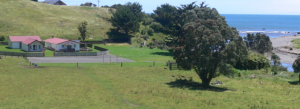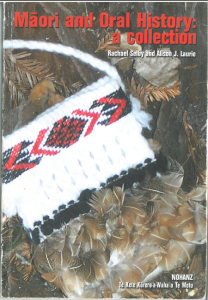Distorting the Articles of the Treaty
 The Act-National-New Zealand First government has introduced a Treaty Principles Bill which seeks to distort the original Treaty of Waitangi Articles, signed by Māori and the Crown in 1840.
The Act-National-New Zealand First government has introduced a Treaty Principles Bill which seeks to distort the original Treaty of Waitangi Articles, signed by Māori and the Crown in 1840.
The original Crown Treaty Principles were enacted in 1989, by the government of David Lange, described at the time by Professor Jane Kelsey as a crude attempt by the government to rewrite the Treaty.
Back then, in 1989, the government was under pressure from Māori and the courts to define – and enshrine – in unequivocal terms how its oft-expressed ‘commitment’ to the Treaty would actually play out, in public policy terms.
The context was, among other things, the administrative reform and devolving of Māori Affairs, masterminded by Māori Affairs Minister Koro Wetere; the development of a Treaty policy which affirmed approaches like Tu Tangata (Māori standing firm) whilst adhering to the Treaty’s partnership intentions; and the further enabling of the Waitangi Tribunal to place ‘all of our history under judicial review’, according to noted historian Professor Alan Ward.
The new Bill, just introduced, is marked by double-speak, which is not surprising given the influence on the Luxon government of Hobson’s Pledge members like Casey Costello and others. For example, the following phrases which appear in the Bill are coded attempts to disguise hostility to Māori – ‘create greater certainty’ [meaning – as enforced by the Crown], ‘promote a national conversation’ [where a Pākehā majority will prevail]; ‘build consensus about the Treaty’ [Waitangi Tribunal views to be excluded} …
Essentially, as happened in 1989, the Bill seeks to graft three new Articles onto the Treaty. The first Article (disingenuously since 1989 called a ‘principle’) reserves all power to the Crown, whereas originally in 1840, power arrangements between the Crown and Māori – negotiated in good faith – were to be reciprocal. The second Article will now completely neutralize customary authority, allowing Māori only extremely limited influence – and only if this can be tagged to a Treaty settlement, a duplicitous anachronism, if ever there was one. The Third Article says that all peoples – even Māori – are equal before the law.
Since 1840, the Crown has vigorously resisted any semblance of power sharing with Māori. A Protectorate to manage Māori interests was quickly abolished in 1845, in the face of settler hostility. Māori were denied the franchise for 27 years after the Treaty was signed – and then only assigned four seats in a House of 70 Pākehā members. In 1862 and 1865, with the Native Lands Acts, Article Three of the Treaty was cited by the government to justify passing iniquitous land legislation aimed at dispossessing Māori – ‘Māori are equal before the law, therefore they have the right to sell their land as individuals, therefore communal titles – the bedrock of Māori spiritual and temporal realities – will be broken up’ …
Thereafter, the history of Crown mendacity and bad faith is very long and heart-breaking; and, as we can see today, it’s far from over.
##
 The literature on this topic is of course enormous, with many fine histories published. One of the very best is Alan Ward A Show of Justice. Racial ‘amalgamation’ in nineteenth century New Zealand, Auckland University Press, Auckland, 1995 (first published 1973). Ward’s focus is the 19th century, up to the 1890s. Professor Richard Hill brings the histories into the 20th century with his insightful two-volume histories, State Authority, Indigenous Autonomy. Crown-Maori Relations in New Zealand/Aotearoa 1900-1950, Victoria University Press, Wellington, 2004; and Maori and the State. Crown-Maori Relations in New Zealand/Aotearoa 1950-2000, Victoria University Press, Wellington, 2009. See also Danny Keenan, The Fate of the Land Ko ngā Ākinga a ngā Rangatira. Māori Political Struggle in the Liberal Era 1891-1912, Massey University Press, Auckland, 2023.
The literature on this topic is of course enormous, with many fine histories published. One of the very best is Alan Ward A Show of Justice. Racial ‘amalgamation’ in nineteenth century New Zealand, Auckland University Press, Auckland, 1995 (first published 1973). Ward’s focus is the 19th century, up to the 1890s. Professor Richard Hill brings the histories into the 20th century with his insightful two-volume histories, State Authority, Indigenous Autonomy. Crown-Maori Relations in New Zealand/Aotearoa 1900-1950, Victoria University Press, Wellington, 2004; and Maori and the State. Crown-Maori Relations in New Zealand/Aotearoa 1950-2000, Victoria University Press, Wellington, 2009. See also Danny Keenan, The Fate of the Land Ko ngā Ākinga a ngā Rangatira. Māori Political Struggle in the Liberal Era 1891-1912, Massey University Press, Auckland, 2023.
If you’re interested in the work of the Waitangi Tribunal, here is a short reading list of really good publications.
Danny also published an analysis of the Treaty Principles, positioned within this turbulent 1980s public policy context. Plse click here – The Treaty is Always Speaking – if you’d like to access the chapter.
The chapter is entitled ‘The Treaty is Always Speaking? Government Reporting on Māori Aspirations and Treaty Meanings’; and appeared in Past Judgement. Social Policy in New Zealand History edited by noted historians Dr Bronwyn Dalley and Professor Margaret Tennant (University of Otago University Press, Dunedin, 2004, pp. 207-223).
 Incidentally, this prescient phrase – the Treaty is Always Speaking – comes from eminent Māori Jurist Sir Eddie Durie, formerly chairman of the Waitangi Tribunal and Chief Judge of the Māori Land Court.
Incidentally, this prescient phrase – the Treaty is Always Speaking – comes from eminent Māori Jurist Sir Eddie Durie, formerly chairman of the Waitangi Tribunal and Chief Judge of the Māori Land Court.
From a Māori historian’s perspective, this Treaty Principles debate can also be located within a much larger historiographical context. This relates to Māori resisting continuing attempts to promote outdated grand narratives of our history, founded upon colonization. Instead, Māori seek to promote counternarratives based upon the centrality of customary knowledge, as introduced below.
Māori Knowledge, Memory and History
Paepae as controlling site of memory
The paepae is the place on the marae where elders stand to deliver their speeches and, as it so happens, to present their memories – or versions of history. The paepae provides context and legitimacy for the histories – and memories – that follow.
The paepae, then, can be said to be the controlling site of all Māori knowledge, including knowledge of the past.
 Māori memory and remembering
Māori memory and remembering
Speeches are an oral process of course, delivered before a discriminating audience of elders and whānau. For Māori, such whaikōrero facilitates many things, not least the art of remembering. In the context of the New Zealand Wars, it is often said by Pākehā historians that ‘we have forgotten the wars’. Whilst this might be true of Pākehā, it is not true for Māori.
‘Forgetting the wars’ is a conversation Pākehā are having with themselves; it does not involve Māori. Pākehā historians don’t make this clear, but they should. Māori have never forgotten the wars. Danny had an article on this matter published in a number of newspapers early in 2022 – you can read the article here – Māori have not forgotten the wars.
How then do kaumātua bring to mind such memories, histories and knowledge when delivering oratory from the paepae? If we think about this process – that of a cultural retention of memory – we can see how deeply embedded such histories of trauma can be.
#
Compiling Oral Histories
 During the 1990s, the compiling and writing of oral histories became a particular interest of Māori who were then setting out as ‘historians’, whether as Māori historians or tribal historians.
During the 1990s, the compiling and writing of oral histories became a particular interest of Māori who were then setting out as ‘historians’, whether as Māori historians or tribal historians.
The distinction wasn’t important to Māori, since methods and processes were largely the same for both groups. However, a small group of Māori historians working within mainstream universities, and disciplines, did emerge, eventually establishing Te Pouhere Korero, a network of Māori historians. This gave rise to a small but interesting literature, written by Māori, focusing on what exactly oral history was to Māori – its methods, processes, protocols and value.
Some attempt was also made, at this time, to locate those observations within a much broader mainstream literature dealing with oral history.
In 2005, Danny published an article on Māori oral history, where he essentially argued that the form and frameworks of oral history for Māori took their cue from the paepae.
That is, from the place where elders stood, when delivering important speeches, especially to visitors coming onto the marae (the marae of course being the temporal, living embodiment of all Māori knowledge, including knowledge 0f the past, or history) .
Plse click here – The Past from the Paepae – if you’d like to read the article. The reference is – Danny Keenan, ‘The Past from the Paepae. The Uses of the Past in Māori History’ in Māori Oral History: A Collection, (eds) Rachel Selby and Alison Laurie, Oral History Association of New Zealand, Wellington, pp. 54-61 [see cover above, left].
 Further reading: for a discussion of how Māori histories might intersect with Pākehā histories, see Danny Keenan, Mā Pango, Mā Whero, Ka Oti, Unities and Fragments in Māori History, in Bronwyn Dalley and Bronwyn Labrum (eds), Fragments. New Zealand Social and Cultural History, Auckland University Press, Auckland, 2000, pp. 39-53.
Further reading: for a discussion of how Māori histories might intersect with Pākehā histories, see Danny Keenan, Mā Pango, Mā Whero, Ka Oti, Unities and Fragments in Māori History, in Bronwyn Dalley and Bronwyn Labrum (eds), Fragments. New Zealand Social and Cultural History, Auckland University Press, Auckland, 2000, pp. 39-53.

